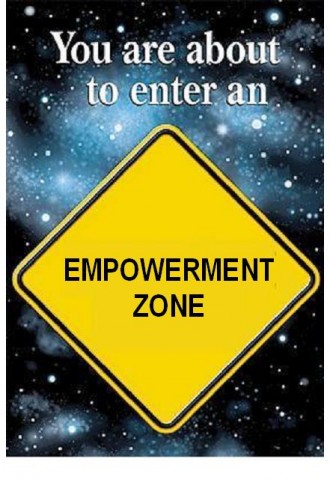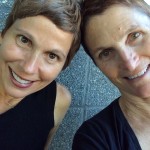 I’m only a week into my new treatment protocol that incorporates Seattle-based acupuncturist Dr. Xin-dong (Rosey) Ma, and I finally feel like I’m on the right track.
I’m only a week into my new treatment protocol that incorporates Seattle-based acupuncturist Dr. Xin-dong (Rosey) Ma, and I finally feel like I’m on the right track.
I’d seen Rosey a few times a couple of years ago but language barriers kept me from fully explaining my eye disease to her and, at the time, I didn’t want to commit to more than one acupuncture treatment a week though she told me I should be coming at least twice a week. This time around, we’ve both learned more about what needs to be done and in only three 45-50 minute treatments over the past week; I already notice a small improvement in my eyesight.
Here’s what we did:
1) I brought her Dr. Andy Rosenfarb’s book titled, Ophthalmology in Chinese Medicine. The book includes a section that explains Retinitis Pigmentosa and provides a basic acupuncture/herbal treatment protocol. Rosey studied the information, which was helpful because it was in Chinese. She then spent a weekend doing her own research and contacting doctors in China who regularly treat RP and were very generous in terms of sharing their knowledge.
2) As part of her treatment, Rosey decided that I need more stimulation around my eyes than regular needle acupuncture could provide (because of the danger of putting needles in certain areas close to the eye). To counter this, she purchased an electro acupuncture machine designed specifically for eyes. The machine comes with an eye mask featuring a dozen or so rubber points that fit around my eyes and hit all of the key acupuncture points there. She is then able to turn the machine to different settings to offer massage, acupuncture or other types of stimulation. She has even started putting herbal medication on small cotton pads that she attaches to the rubber points so it penetrates that area.
3) Along with the eye stimulus, Rosey inserts acupuncture needles in my hands, feet and lower legs.
4) Rosey provides an herb formulation that uses the Chinese herbs recommended in Dr. Rosenfarb’s book as a base and then adds her own herbs to boost nourishment to the eyes. Her formulation costs me $35 a week.
As I’ve already discovered and Rosey keeps stressing to me, proper nutrition and stress management are both CRITICAL to effectively managing this eye disease. I also know that overall circulation and eye stimulation are key so each morning, I start my day with this routine:
- I drink a glass of filtered, room-temperature water followed by a large glass of freshly made GREEN JUICE: I use three large pieces of kale, a cucumber, and three celery stocks. Occasionally I also toss in a green apple
- While drinking my juice, I spend a half an hour in front of my color therapy lamp (courtesy of Dr. Damon Miller) and do my acupressure and eye exercises (courtesy Dr. Weidong Yu). I also toss in a few eye exercises I learned from Dr. Miller. If you go to my Acupuncture Resource Guide, I provide a link to places to access free or inexpensive eye exercises.
- I’ve cut out processed foods from my diet and am really striving to eat a mostly plant-based diet. The final push for me? The documentary Forks Over Knives, which is packed with studies showing the link between meat, dairy and degenerative diseases. It especially focuses on cancer and heart disease, but I figure that if animal proteins cause cancer genes to be turned on, they are likely to also cause RP genes to be turned on. I haven’t completely eliminated cheese, but I am striving to consume a very small amount of animal protein – around 5 percent of my total diet.
- Along with the herbs from Rosie, I take 500 milligrams of TUDCA daily as well as Vitamin D and Omega 3. I also need to start back on bilberry and Vitamin A or some equivalent. I had been taking Lutein but discovered through the food allergy screening test that Dr. Rosenfarb advised me to take that I’m moderately intolerant to Lutein.
- I try to exercise daily and I plan to start a once-a-week yoga class this weekend.
- Based on Dr. Yu’s advice, I’m working to limit my screen time (computer, smart phone etc) to a total of four hours a day.
I’ve got a long way to go. But I know I’m on the right track and it feels great. The best part is that it’s a treatment plan I can sustain long-term from both an affordability and access point of view.
FYI, on another great note, Dr. Rosenfarb told me that the NIH is funding a larger, one-year RP/acupuncture study with Johns Hopkins University based on the initial positive results of the small study recently done—which used an acupuncture protocol developed by Dr. Rosenfarb. I’ll write more about this and other things Dr. Rosenfarb is doing to help people struggling with RP in my next blog post.


Rosey’s committment to helping you and finding out more about your condition inspires me,just as your own committment always does. It sounds like you’ve found a healthy way to live and fight RP. Continued luck. I’m rooting for you all the way!
As you know, I’ve been doing some alternative medicine treatments for a few years now and they’ve done great things for me.
I think there’s still so much unknown to traditional medicine that exploring alternative options is necessary. Unfortunately at the moment, most people do not know enough to try it, or respect it enough to give it shot.
Thanks again for sharing your experience,
Jared
Thanks, Jared. I agree completely. I wish I’d started down this road nine years ago when I was first diagnosed..